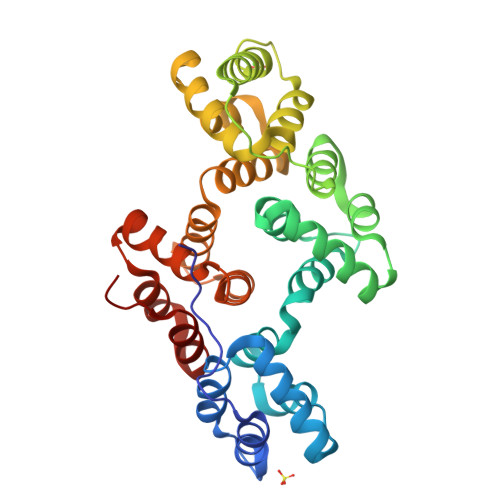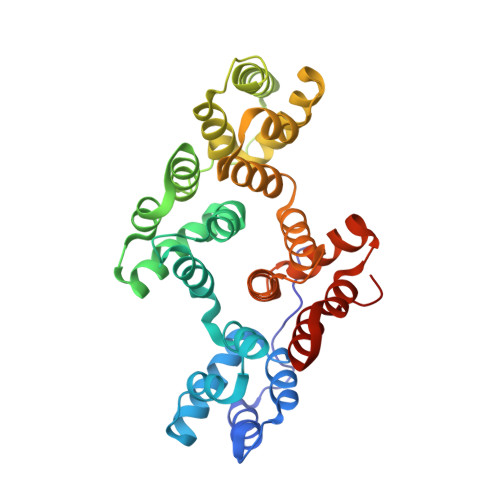Interfacial basic cluster in anexin V couples phospholipid binding and trimer formation on membrane surfaces
Mo, Y.D., Campos, B., Mealy, T.R., Commodore, L., Head, J.F., Dedman, J.R., Seaton, B.A.(2003) J Biological Chem 278: 2437-2443
- PubMed: 12401794
- DOI: https://doi.org/10.1074/jbc.M210286200
- Primary Citation of Related Structures:
1N41, 1N42, 1N44 - PubMed Abstract:
Annexin V is an abundant eukaryotic protein that binds phospholipid membranes in a Ca(2+)-dependent manner. In the present studies, site-directed mutagenesis was combined with x-ray crystallography and solution liposome binding assays to probe the functional role of a cluster of interfacial basic residues in annexin V. Four mutants were investigated: R23E, K27E, R61E, and R149E. All four mutants exhibited a significant reduction in adsorption to phospholipid membranes relative to the wild-type protein, and the R23E mutation was the most deleterious. Crystal structures of wild-type and mutant proteins were similar except for local changes in salt bridges involving basic cluster residues. The combined data indicate that Arg(23) is a major determinant for interfacial phospholipid binding and participates in an intermolecular salt bridge that is key for trimer formation on the membrane surface. Together, crystallographic and solution data provide evidence that the interfacial basic cluster is a locus where trimerization is synergistically coupled to membrane phospholipid binding.
Organizational Affiliation:
Department of Physiology and Biophysics, Boston University School of Medicine, Massachusetts 02118, USA.


















